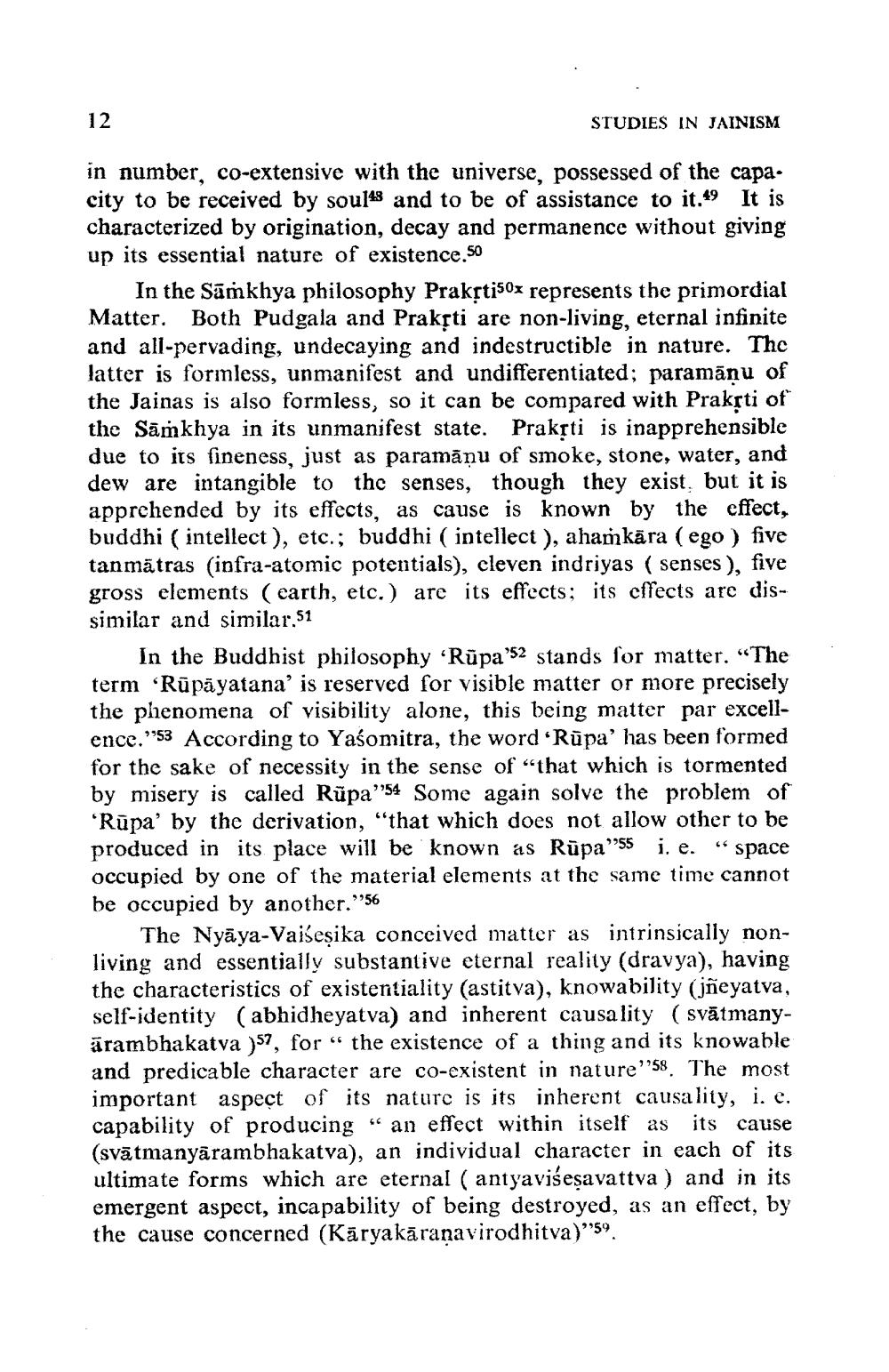________________
12
STUDIES IN JAINISM
in number, co-extensive with the universe, possessed of the capa. city to be received by sou14s and to be of assistance to it.49 It is characterized by origination, decay and permanence without giving up its essential nature of existence.so
In the Samkhya philosophy Prakrti50x represents the primordial Matter. Both Pudgala and Praksti are non-living, eternal infinite and all-pervading, undecaying and indestructible in nature. The latter is formless, unmanifest and undifferentiated; paramānu of the Jainas is also formless, so it can be compared with Praksti of the Sāmkhya in its unmanifest state. Prakrti is inapprehensible due to its fineness, just as paramānu of smoke, stone, water, and dew are intangible to the senses, though they exist, but it is apprehended by its effects, as cause is known by the effect, buddhi (intellect), etc.; buddhi ( intellect ), ahamkāra ( ego ) five tanmätras infra-atomic potentials), cleven indriyas ( senses ), five gross elements (carth, etc.) are its effects; its effects are dissimilar and similar. 51
In the Buddhist philosophy Rupa'52 stands for matter. “The term 'Rūpāyatana' is reserved for visible matter or more precisely the phenomena of visibility alone, this being matter par excellence."'53 According to Yasomitra, the word “Rūpa' has been formed for the sake of necessity in the sense of "that which is tormented by misery is called Rūpa''54 Some again solve the problem of 'Rūpa' by the derivation, "that which does not allow other to be produced in its place will be known as Rūpas i. e. “space occupied by one of the material elements at the same time cannot be occupied by another."56
The Nyāya-Vaiseșika conceived matter as intrinsically nonliving and essentially substantive eternal reality (dravya), having the characteristics of existentiality (astitva), knowability (jñeyatva, self-identity (abhidheyatva) and inherent causa lity (svātmanyārambhakatva )s?, for “ the existence of a thing and its knowable and predicable character are co-existent in nature''58. The most important aspect of its nature is its inherent causa lity, i. e. capability of producing an effect within itself as its cause (svātmanyārambhakatva), an individual character in each of its ultimate forms which are eternal (antyaviśeşavattva) and in its emergent aspect, incapability of being destroyed, as an effect, by the cause concerned (Kāryakāranavirodhitva)''59.




